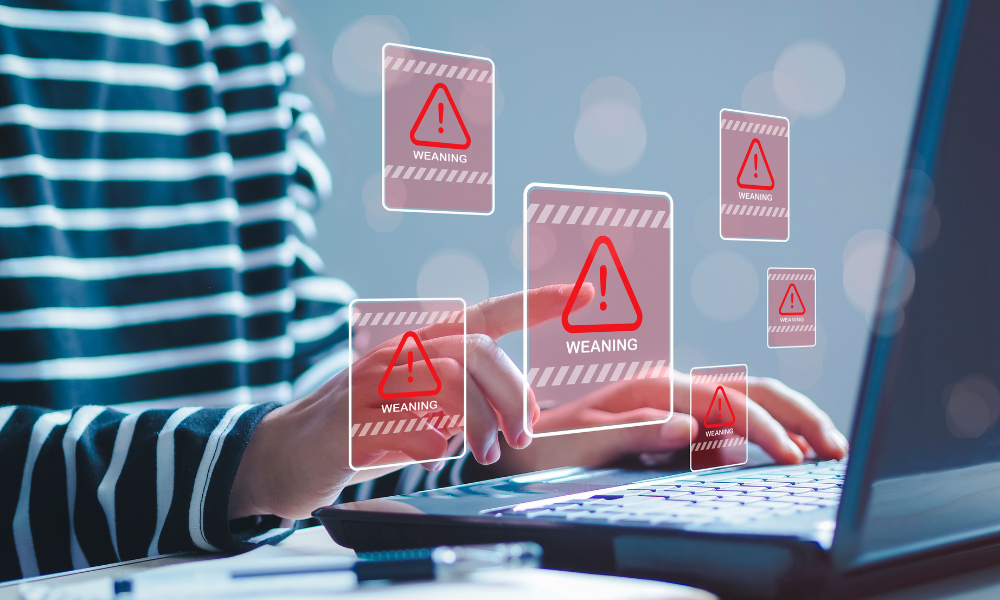In July, the Business Development Bank of Canada Capital announced a new intellectual property development financing envelope to support intellectual property-focused companies in Canada. The financing is provided to companies in the form of a sub-debt, convertible debt and equity to accelerate commercialization.
It’s one way in which technology- and IP-focused companies are staying afloat and even thriving during the coronavirus pandemic.
“We’re seeing more of this kind of thing,” i.e., public sector institutions helping Canadian companies secure their IP, says Matthew Zischka, managing partner for Smart & Biggar LLP. “We’re hoping to see more of that, that this will create more of those companies that have the critical mass to get to the next stage.”
And legal tech is a subsector that’s seen much growth; this has included law firms purchasing “captive” legal tech companies that provide services for only one firm, says IP lawyer Roch Ripley of Gowling WLG in Vancouver.
Gavin Manning, a partner in IP firm Oyen Wiggs Green & Mutala LLP in Vancouver, sees a thriving tech sector in several areas. Many startup companies have been busy developing their technology in pandemic-compliant way, he says. “They’ve been pushing ahead; the COVID situation hasn’t slowed them down very much at all.
“It illustrates the resilience of that part of our economy.”
What’s cooking in tech IP
As it did in the last big recession in 2008, Ripley sees the government putting money into “cleantech” such as solar and wind power, carbon capture, water purification, battery technology and industrial purification. In December, the federal government announced plans to boost hydrogen use and to increase carbon taxes by 566 per cent.
The pandemic has also made companies in certain fields very attractive, Ripley notes. Life sciences companies have attracted “tons of investment” owing to the demand for COVID-19 vaccines, while on the physical assets side there has been great interest in remote learning and videoconferencing technology.
The market for apps, on Android and iOS, is also very strong, says Gervas Wall of boutique IP firm Deeth Williams Wall LLP in Toronto. “There’s a lot of activity in fairly small projects like that,” he says, as building an app doesn’t take much money to develop compared to developing deep learning, for example.
There is also a lot of development activity in the financial sector, on security systems and cybersecurity, he says. “My clients
. . . are much more concerned with having a system that manages health records and allows those to be distributed over different systems yet maintains a high level of security.”
As well, he adds, “You’re seeing a lot more use of distributed communication; everyone is doing things outside of the office, [which] inherently makes your system more vulnerable,” with hackers exploiting employees’ work-from-home vulnerabilities.
Tech IP companies are also working in the electro-chemical field, in quantum computing, optics and many other fields, says Manning.
“This has been a very strange year because of our pandemic, but it really shows that the economy is kind of split in two,” he adds. Many startup companies, with funding, “went home, but [these others] just kept working. And they’ve been very busy developing their technology, working remotely [or] in a way that is pandemic compliant.”
Patenting IP
In November, the Canadian Intellectual Property Office released new guidelines on patentable subject matter and examples of applying the new guidelines to computer-implemented inventions, medical diagnostic methods and medical uses.
These new guidelines were set in response to August’s decision in Choueifaty v. Canada (Attorney General), 2020 FC 837, which found that the CIPO had erred in determining the essential elements of the claimed invention by using the “problem-solution” approach.
The legal profession now has hope that it will be easier to obtain patents in Canada for inventions that are implemented using a computer, says Wall.
Getting applications patented for computer software-related inventions is becoming viable again, Manning says, after a period of several years during which it was “almost impossible to get patents for computer software-related inventions.” Although some patent examiners in the United States had previously granted as many as a half-
dozen patent applications each month, he says, that changed with the United States Supreme Court’s 2014 decision in Alice Corp. v. CLS Bank International, 573 U.S. 208, which held that certain claims about a computer-implemented, electronic escrow service for facilitating financial transactions covered abstract ideas ineligible for patent protection.
“Finally, we now have some changes in the law,” says Manning. “The courts have clarified somewhat the tests for getting software-related applications patented, and the patent offices have responded by clarifying their rules in a way that matches that somewhat. And, so, it is much less hopeless today than it was a couple of years ago to consider applying for a patent in the computer software field.”
Whether artificial intelligence, i.e., a computer, can be an inventor for a patent will vary country by country, says Wall, but in most countries, including the United States — where the right to a patent is a constitutional right — it will not be.
Collaborations and protecting IP
Collaborations between academia and industry exist across the country in innovation hubs such as entrepreneurship@UBC — the Graham Lee Innovation Centre, VIATEC in Victoria, and in Toronto the MaRS Innovation Hub, and the Centre for Entrepreneurship and Creative Destruction Lab at the University of Toronto, as well as the research facilities of the University of Waterloo.
There’s a concentration of computer AI-related inventions coming out of the Toronto-Waterloo area, says Zischka, and a belief that the patent system isn’t adequate or doesn’t apply to some of these ventures. “That’s just not the case.”
Many of these collaborating companies “are well advised to think about the software and the algorithms that they’re creating and discuss those with their patent professional, who can then help them use the Canadian patent office as well as the U.S. patent office to defend, secure and maximize the value of those innovations,” he says.
Often, when Canadian companies reach a certain size, they are acquired by larger entities, typically non-Canadian, Zischka adds. Although they are assessed in these transitions by having a strong IP portfolio, he says they don’t spend enough time and energy in securing their IP rights and building their portfolios in that early stage.
“If you’re in Silicon Valley, one of the first things you think about if you’ve got a new idea is contacting your patent lawyer, and I don’t think Canadian companies have that same mindset.”
Read more: What knowledge and skills should Canadian patent lawyers have?
Manning advises that companies keep the basics in mind in protecting their IP: 1) plan ahead and have an IP strategy well in advance of when product is set to go to market; and 2) the need to focus on quality over quantity. In recent years, courts have focused more on patent application errors and that the patent applicant should bear the brunt of those.
“Chances are that quick and dirty little patent application, at the end of the day, won’t be good enough to provide that solid protection that you’re looking for,” Manning says. “For startups, often, their main asset is their IP. That’s what they’re showing investors, and the success of the exit strategy for founders will often be considered. All of that won’t go well if a poor job was done in getting the application filed.”
Although that advice isn’t new, it’s very relevant today with information on the internet that says typing up a page or two of description and paying $150 to the U.S. Patent Office will protect an invention, he says. “That, in my opinion, is false, unless you’re very, very lucky.”
Wall also notes the importance of clearing and protecting brands at the outset, especially for consumer-facing companies. That’s especially important for countries such as China, where protection is based on filing first, he says. And, ultimately, if the company has longevity, the brand will be its most valuable intellectual property.
“We like to talk about patents and trade secrets and really focus on the technology, but longer term, the most valuable IP is the whole goodwill of the company, [which] is caught up in the brand, in the trademark.”
Commercializing assets
It has been difficult for enterprises to scale to the level of big tech companies in Canada, says Ripley, making homegrown companies ripe for acquisition and/or foreign ownership.
“How do you get the Canadian talent without having the Canadian company to develop it? We need to do a better job in this country of protecting and commercializing our technology,” he says. “You look at our GDP per capita and our productivity relative to the Americans, and it’s not trending in the right direction. And I think, to a very large degree, it’s because we don’t do a good job of commercializing intellectual assets, which is really the asset of the 21st century.”





